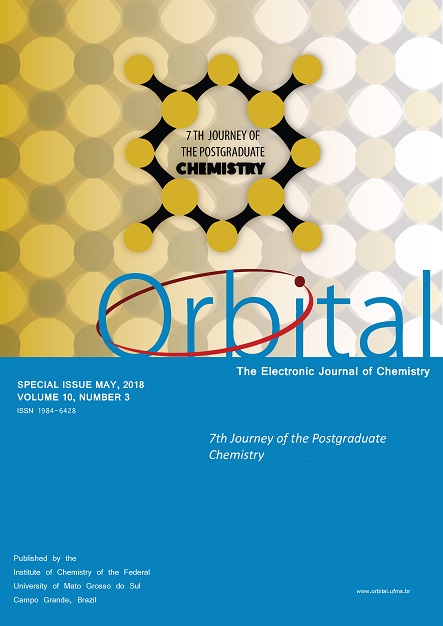Optimization and Validation of a Methodology for the Quantification of Streptomycin Using Square Wave Voltammetry
- aminoglycoside antibiotic,
- natural water,
- streptomycin,
- voltammetry
Copyright (c) 2018 Orbital: The Electronic Journal of Chemistry

This work is licensed under a Creative Commons Attribution-NonCommercial-NoDerivatives 4.0 International License.
Abstract
The quantification of pharmaceuticals drugs is typically accomplished using chromatography, which requires several pretreatment steps of the sample, demanding time and supplies. Thus, the present work proposed the development and validation of a voltammetric method to quantify the antibiotic streptomycin (STP), in aqueous samples. Initially, the parameters of the technique were optimized applying square wave adsorptive cathodic stripping voltammetry (SW-AdsCSV), using the hanging mercury drop electrode (HMDE) as the working electrode. Then, the adequacy of the analytical method was evaluated using validation criteria, such as precision, selectivity, linearity, limits of detection and quantification. The linearity was evaluated by a standard addition curve from STP 8.09 to 210.4 µg L-1. The limits of detection (LOD) and quantification (LOQ) were 0.18 and 0.60 µg L-1, respectively. The accuracy and precision of each method were expressed as percentage of STP recovery in fortified solutions, resulting in deviation below 20%, acceptable for analytes at the trace level, indicating accuracy and precision of the methods. The voltammetric methods have advantages over others described in literature, since they do not require steps of pre-treatment of the samples, being, this way, fast and low cost analyzes. The method was applied in natural and effluent water; however, STP was not detected in a real sample, in three samplings.

